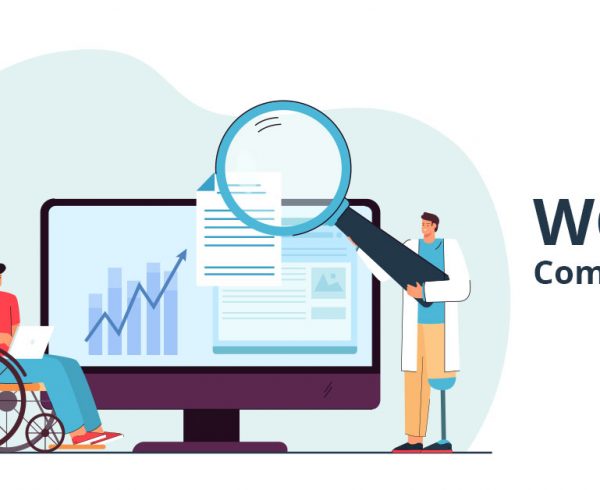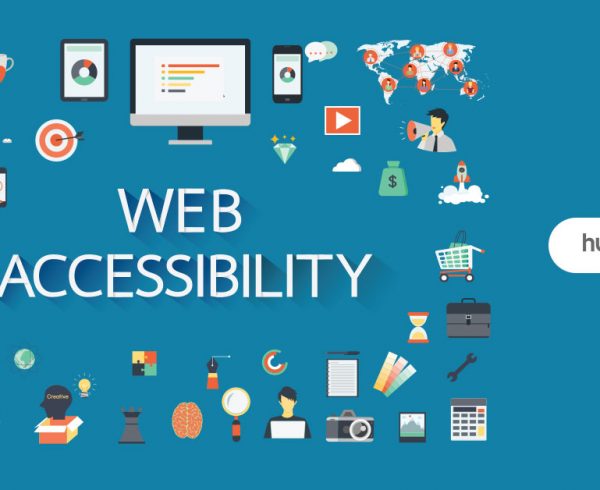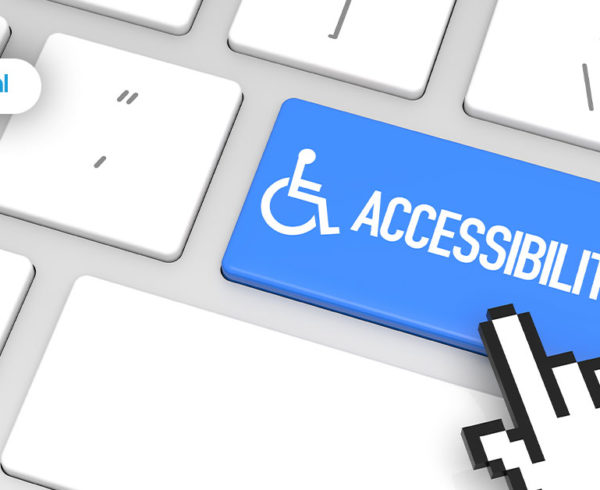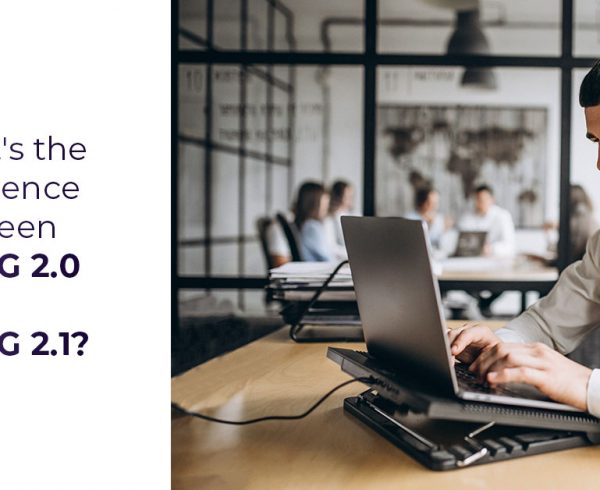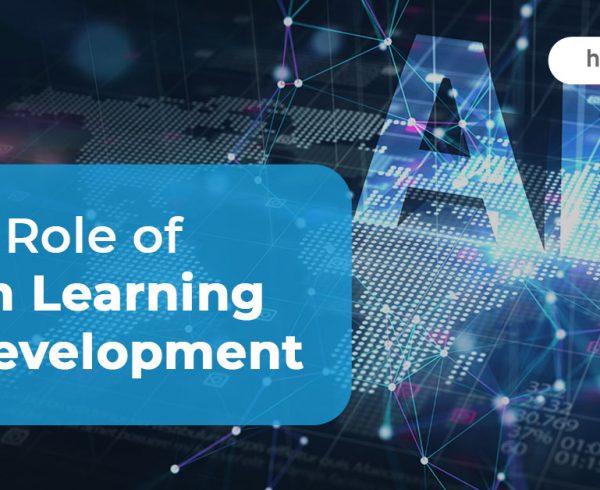Summary
This blog delves into the crucial elements and significance of accessibility remediation, which is essential for creating a more inclusive digital space. It discusses solutions such as conducting audits to identify problems, employing techniques for remediation, establishing principles to prioritize repairs, and implementing proactive monitoring to ensure ongoing enhancement.
Accessibility remediation sits at the heart of digital inclusivity, ensuring that everyone, regardless of ability, can fully engage with the online world. This process removes barriers that impede users with disabilities and transforms digital content into a platform with a user-centric design for accessibility and seamless information access.
Crucially, adherence to legal requisites such as the Americans with Disabilities Act (ADA) and Section 508 of the Rehabilitation Act is complemented by a pivotal standard: the Web Content Accessibility Guidelines (WCAG). The standards are a common, global standard that was created by numerous parties, such as the government, business community, disability advocacy groups, and accessible research organizations.
In this post, we’ll explore the key aspects and importance of accessibility remediation in fostering a more inclusive digital environment. Read on!
Table of Contents:
- Significance of Web Accessibility Remediation Solutions
- Remediation Solutions to Check Out
- Conclusion
Significance of Web Accessibility Remediation Solutions
Ensuring conformance with WCAG 2.0 and WCAG 2.1 standards protects organizations from potential legal ramifications and promotes responsible corporate citizenship.
Beyond the fundamental ethical imperative, there are compelling reasons for organizations to prioritize web accessibility best practices.
1. A Transformative Process
Remediating accessibility issues is not a one-time fix but an ongoing journey to ensure continuous improvement. It might involve restructuring website layouts, adding alternative text descriptions for images, implementing keyboard navigation options, and providing transcripts for multimedia content.
2. Beyond Websites
The scope of accessibility remediation extends beyond websites, encompassing mobile apps, documents, and other digital formats. It ensures consistent inclusivity across the entire digital spectrum, allowing users with disabilities to access information and services regardless of the chosen platform.
3. Investment in the Future
Adopting WCAG remediation techniques is a wise business decision, apart from being an ethical imperative. By creating a barrier-free environment, you tap into a wider audience, fostering brand loyalty and building trust with customers who value inclusivity.
4. Enhancing User Experience for All
Websites and applications that provide a seamless and intuitive user-centric design for accessibility to experience higher user satisfaction, increased engagement, and improved conversion rates.
5. Boosting Search Engine Optimization (SEO)
Search engines increasingly prioritize websites that adhere to WCAG, impacting organic search rankings and online visibility. Implementing accessibility solutions can improve SEO performance and drive more qualified traffic to your digital platforms.
Also Read: 5 Quick Wins for Accessibility Remediation You Can Implement Today
Remediation Solutions to Check Out
The following are actionable accessibility improvement strategies:
1. Highlighting Accessibility Issues via a Comprehensive Audit Approach
Every endeavor toward website accessibility improvement begins with a comprehensive audit. This audit aims to gauge the scale and scope of necessary remediation efforts, ensuring targeted and effective action.
Accessibility audits delve into how your website and associated digital assets adhere to relevant standards, primarily the Web Content Accessibility Guidelines (WCAG).
Website owners can undertake these audits in two ways:
- Manual Approach: Utilize accessibility checklists, such as those aligned with ADA website compliance requirements. While cost-effective, this approach may miss intricate issues and require significant time investment.
- Expert Service Providers: Leverage the expertise of professionals. Their blend of technical proficiency and in-depth WCAG knowledge equips them to conduct exhaustive audits, detect even subtle non-conformances, and offer tailored accessibility solutions.
Here is how to go about the process:
- Identify Non-Conformances: List specific WCAG Compliance failures and identify individual WCAG Success Criteria (SC) not met by your website elements. For instance, “Our homepage fails WCAG 2.1 SC 1.2.2 due to lacking captions for promotional videos.”
- Provide Context and Evidence: Include details like affected pages, elements, and screenshots for clear communication.
- Prioritize Based on Severity and Impact: Determine which failures significantly impact the user experience.
2. Remediating Issues
Following the meticulous mapping of digital barriers by accessibility audits, the essential remediation process commences. This phase involves strategically implementing corrective measures to dismantle those obstacles, fostering an inclusive digital experience for all users.
Several key WCAG remediation techniques are frequently employed to address common accessibility issues within websites and online documents:
- Enhancing Image Accessibility: Descriptive alternative text (alt text) is added to convey the meaning and context of visual elements for those who rely on assistive technologies, ensuring a comprehensive understanding of visual content.
- Optimizing Screen Reader Compatibility: Code structure and content organization are carefully reviewed and adjusted to ensure seamless compatibility with screen readers, enabling users with visual impairments to interact with digital content effectively.
- Ensuring Visual Clarity: Adequate contrast between text and its background is established to create a user-centric design for accessibility and prevent visual strain, particularly for individuals with low vision or color vision deficiencies.
- Supporting Diverse Navigation: Keyboard navigation functionality is implemented or enhanced to accommodate users relying on traditional mouse interactions, promoting independent and efficient navigation within digital spaces.
3. Determining Remediation Priority
The Web Content Accessibility Guidelines (WCAG) provide a valuable framework for prioritizing remediating accessibility issues to address the critical barriers first.
Here are the principles for establishing remediation priority:
- Focus on Fundamental Barriers: Begin by addressing Level A WCAG standards, as they represent the essential foundation for accessibility. These guidelines encompass elements such as keyboard navigation, meaningful text alternatives for visual content, and sufficient contrast between text and background.
- Prioritize High-Impact Issues: Focus on violations that significantly impede user experience, such as those affecting navigation, content comprehension, and form completion.
- Balance Impact and Effort: Strategically tackle issues that offer a high return on investment, considering their impact on users and the resources required for accessibility remediation.
- Address High-Traffic and Essential Pages: Prioritize accessibility barriers on pages that receive significant traffic or are critical for site functionality, ensuring a seamless experience for most users.
- Aim for Continuous Improvement: While the entire Level AAA WCAG compliance may not be feasible for all content types, strive to implement as many of these standards as possible to broaden accessibility and reach a wider audience.
4. Proactively Monitoring for New Accessibility Deficiencies
Ensuring accessible digital experiences requires WCAG implementation and proactive remediation alongside ongoing vigilance.
This vigilance manifests in the following key actions:
- Embracing Continuous Improvement: Accessibility regulations are dynamic, with potential future adjustments necessitating adaptability. It is crucial to integrate a regular monitoring schedule into your accessibility policy, proactively identifying and addressing emerging issues before they pose significant barriers.
- Adapting to Change: Content updates and website revisions can inadvertently impact accessibility. Implementing post-update accessibility audits mitigates this risk, safeguarding the inclusivity of your digital space.
- Facilitating Transparency and Compliance: Accessibility monitoring is crucial in reporting. Certain laws mandate reporting on the accessibility status of digital content. Regular monitoring ensures accurate reporting, demonstrating your commitment to WCAG compliance and digital inclusivity.
Also Read: Digital Inclusivity Matters: A Guide to Accessible Website Development
Conclusion
Web accessibility remediation transcends being a mere checkbox; it stands as an investment in constructing a more inclusive and equitable digital landscape. Organizations stand to gain myriad benefits, embracing a profound sense of social responsibility and acknowledging the right of every individual to participate in the digital realm on equal terms.
To streamline the process and ensure comprehensive accessibility remediation, many website owners utilize specialized web accessibility solutions. These tools automate the identification and resolution of accessibility barriers, significantly reducing the manual effort and technical expertise required.
With Hurix Digital, you can breathe easy knowing your content meets the highest accessibility standards. We translate complex principles into practical strategies for real-world implementation, guiding you toward WCAG compliance and accessible digital experiences.
Connect with us today to learn more!



